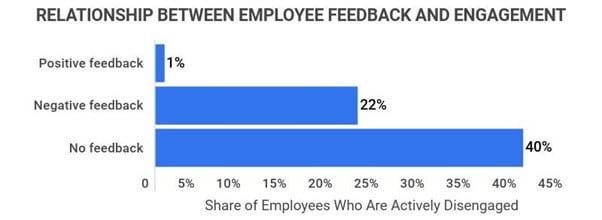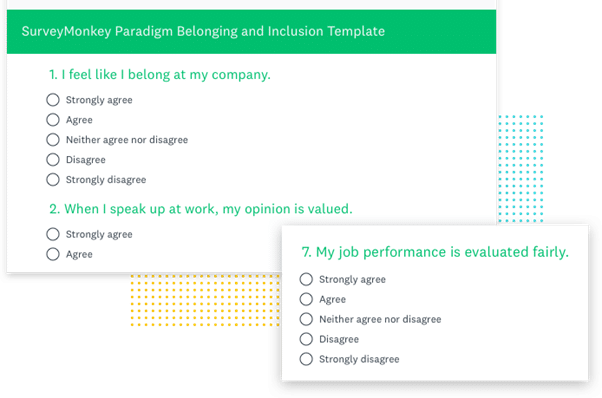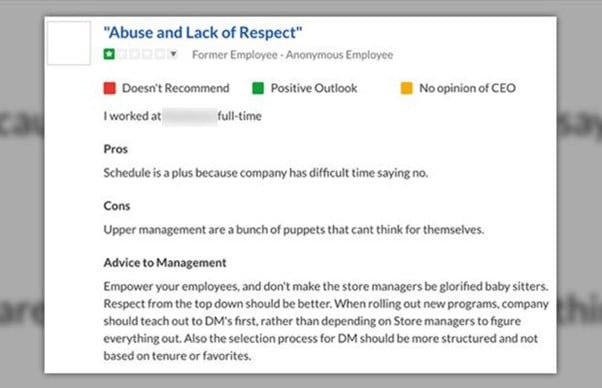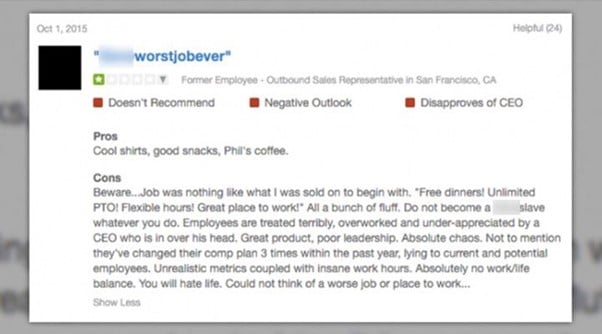You may have heard the term feedback culture – it’s a phrase that’s become popular in the business space for a number of years. But what does it mean to have a feedback culture, and how can you create one? We’ve got it all covered here, so read on to learn about how to create a culture of feedback in your workplace.
What Is a Feedback Culture?
A feedback culture refers to a work environment or team dynamic that encourages and values the regular exchange of feedback among its members. It is characterized by open communication channels, mutual respect, and a shared understanding that providing and receiving feedback is essential for personal and professional growth.
In a feedback culture, feedback is not limited to the top-down approach, where only managers provide feedback to their subordinates. Instead, it emphasizes a multi-directional feedback flow, where feedback is encouraged to flow in all directions, including upward, downward, and horizontally between peers. This means that employees have the opportunity to provide feedback to their supervisors, colleagues, and higher-level management.
When correctly executed, a healthy feedback culture reduces employee turnover, increases productivity, and improves brand loyalty.
When done badly, a culture of feedback can leave employees even more resentful than before.
Here’s why you should create a feedback culture and some practical tips on how to do it.
Why Is a Feedback Culture Important?
1. A feedback culture saves time and money spent on recruitment
Constantly recruiting and training new staff is way more expensive than retaining an already qualified crew. In one study of 65,672 employees, Gallup found that those who received strengths feedback had turnover rates that were 14.9% lower than for employees who received no feedback (controlling for job type and tenure). That’s because employees feel valued and that their presence at the company has value and impact.

Feedback culture tip: Create a safe environment for feedback
If you want to create a healthy culture of feedback in your workplace, you must create a environment that inspires communication between team members. Creating this type of safe workplace will make it much easier for employees to share and receive feedback from each other freely and without hesitation.
This can also make it easier for management to provide regular, real-time feedback that is natural and authentic.
And according to statistics, 63% of employees want to receive more in-the-moment feedback. Additionally, 82% of workers say they feel valued when someone takes time to provide feedback, and 79% of workers claim that assessment is important to their professional development. That means creating a culture of feedback isn’t just something that’s nice to do – it’s a necessity for your employees to want to stick around!
Feedback culture tip: Rethink your feedback processes
Pulse surveys for feedback
In 2023, the words annual performance review or management appraisal may seem old-fashioned and even impersonal and hierarchical. Being given a score for your performance can be really degrading.
Why not swap out your annual review for surveys?
Pulse surveys are a great way to ensure feedback culture is ingrained. They consist of a short series of questions conducted online where employees can provide fast and anonymous feedback. These surveys also allow for streamlined data collection and timely analysis of results. Some companies will conduct weekly pulse surveys with 1-3 questions. Others may conduct them monthly with more questions.
Questions include ones such as “On a scale of 1-10, how likely is it that you would recommend working at [Company] to a friend?”
Information from pulse surveys can be collated easily and will show if you’re hitting your core goals, company KPIs, and happiness scores. Use a tool like Survey Monkey for fast and easily collected company pulse surveys that employees can feel comfortable about.

Have one-on-ones with employees
In addition to regular pulse surveys, employees and managers should feel that they can provide feedback in other ways. Carve out space in your managers’ schedules for employees to chat with them face to face. Have an open door HR policy for feedback, questions, and concerns.
Have an online hub for shared ideas and honest feedback
Provide an online hub like Trello for feedback from team members. This can be workplace ideas, campaign suggestions, team productivity tips or even team event ideas.
Hudl is a great example of feedback culture done right. Hudl prides itself on its culture of feedback, where its 450 employees are encouraged to give respectfully blunt feedback for the betterment of the team. The sports tech company even has its own hashtag #RealTalk. Hudl incorporates #RealTalk into everyday conversations among employees using Quantum Workplace.

It can be useful to provide training and company standards for what feedback looks like. That way, everyone will be clear on how to give feedback in a way that is professional, and not disrespectful or mean.
2. A feedback culture will nurture and grow employee advocacy
From a marketing agency perspective, I find it easy to spot companies that nurture and grow employee advocacy and those that don’t. Employee advocacy and the feedback culture are linked because a happy and engaged employee will want to advocate for your company.
Employee advocacy is the process of using employees to generate exposure for your brand using their own online networks and connections. That includes:
- Sharing company social media posts
- Recommending open positions to friends and family
- Taking the initiative to promote the company or share ideas
- Take an active involvement in feeding back product or service problems
- Caring about the future success of the company
But unhappy employees won’t do any of that!
So, how do you make sure that employees stay happy and want to advocate for your brand? The answer is regular positive feedback. 85% of employees take more initiative when they receive feedback in the workplace. That’s huge.
Feedback culture tip: Be positive
There’s much talk of toxic workplaces or toxic employees—but most company employees don’t start out toxic. The situation occurs after years of being ignored and receiving no appreciation or recognition.
Don’t wait until things get bad, and you must beg great employees not to leave.
Instil a positive feedback culture in your workplace and lead from the top. Once this positive foundation is in place, new employees will follow.
Here are some of the ways I’ve seen a positive feedback culture work well.
- Regular “great job” meetings. Get your team together with donuts and coffee, and appreciate the efforts your team has made over the month. Encourage employees to be positive about each team member and their work.
- Be specific. Encourage your team to provide clear, specific feedback on what someone has done well. For example, “Sarah, the way you organized that expo and coordinated the booth design was awesome.”
- Say “Thank you.” I’m not sure why so many senior managers are afraid to say thank you to employees. Sure, you pay them to be there, but you can still appreciate them. Thanking employees for going the extra mile really boosts morale and contributes to great employee advocacy.
3. Feedback culture can impact your online reputation
The sad truth is that employees who are unable to share feedback with employers will leave and share feedback online. They were so dissatisfied that they left and then shared a negative review online to warn future employees.
That is not the kind of feedback culture you want for your brand. Negative feedback will discourage great employees from joining, show customers that you have a poor work culture, and can even impact your company valuation long term.
Negative employee reviews have garnered press attention in recent years. Some of the funnier ones on feedback channels even make it into roundups, like these.


Feedback culture tip: Read employee review sites
This is not an ideal situation because the damage is already done. But, you can learn a lot from reading ex-employee reviews.
Here are some sites to keep on your radar.
You can claim your employer page and sign up for alerts to see feedback from your current and former employees as it’s shared. Then take it seriously.
Bad company reviews should be discussed with HR and management, and changes implemented where possible.
If an employee has decided to leave, an exit interview is your last opportunity to collect critical feedback. Directly ask departing employees what they think about management, their salary, the team, their growth opportunities and, of course, the company culture.
Is Feedback Culture Worth Your Time?
Yes, yes, and a thousand times, yes! Building a culture (and nurturing it) means that you act on feedback, and this is a great thing for your brand. It’s also important to listen and respond to customer feedback too.
Thanking customers for providing you with product feedback and then taking it to the top is the hallmark of a company heading for great things.
Shoutout to the Agorapulse support team for doing just that. Whenever I provide feedback on a new feature, I’m greeted with prompt and positive messaging.

Employees and clients alike need to see that giving feedback is worth their time. Valuing feedback improves your company’s retention, productivity, and morale.
Get started on creating a culture of feedback in your social media agency. Check out our free demo of Agorapulse to help you schedule, track, and measure all your social media efforts.
![How to Create a Healthy Feedback Culture [Definition + Practical Tips]](https://www.agorapulse.com/blog/wp-content/uploads/sites/2/2022/03/How-to-Create-a-Culture-of-Feedback-in-Your-Social-Media-Agency_V2_Pinterest.png)
![Featured image of How to Create a Healthy Feedback Culture [Definition + Practical Tips] how to create a culture of feedback article](https://www.agorapulse.com/blog/wp-content/uploads/sites/2/2022/03/How-to-Create-a-Culture-of-Feedback-in-Your-Social-Media-Agency_V1_Blog-Feature.png)




![Feature image of Game-Changing Insights for Agencies in 2024 [Free Ebook] Feature image of Game-Changing Insights for Agencies in 2024 [Free Ebook]](https://www.agorapulse.com/blog/wp-content/uploads/sites/2/2023/12/Have-Agency-Insights-for-2024-Blogpost-Header-1200x508.jpg)